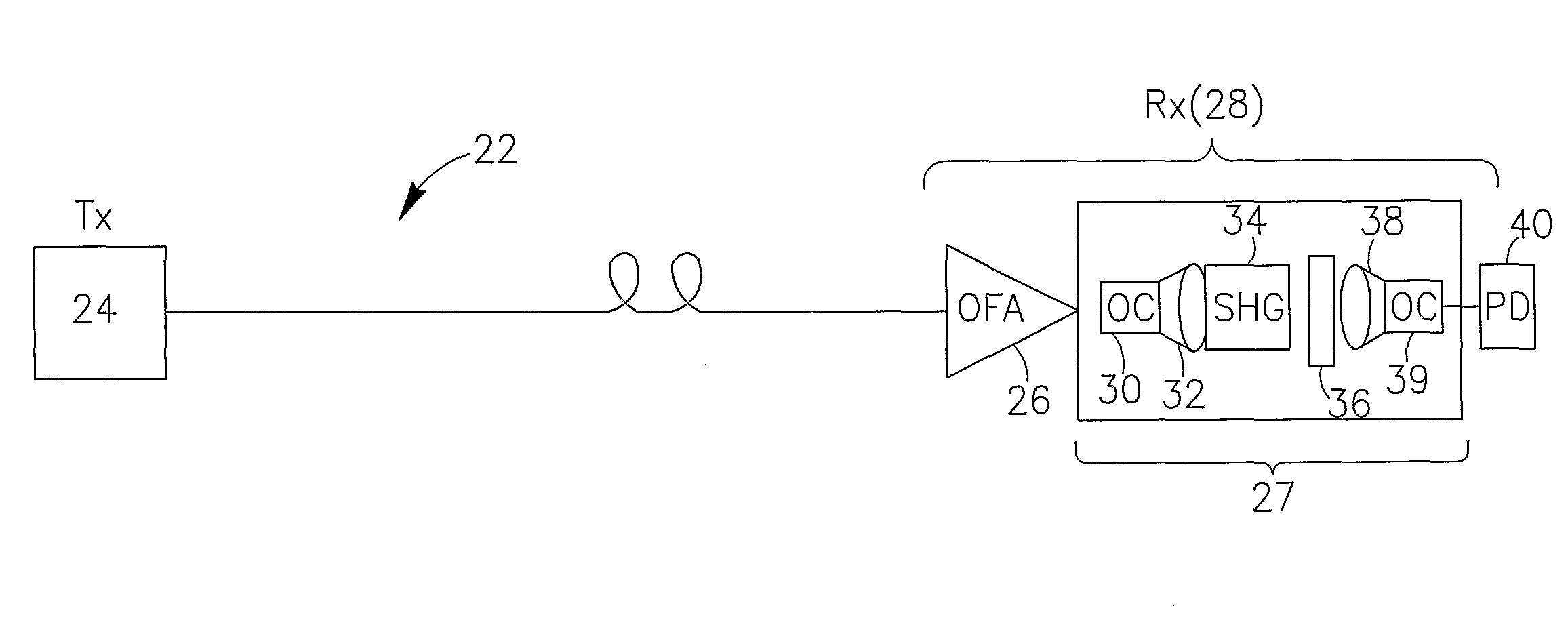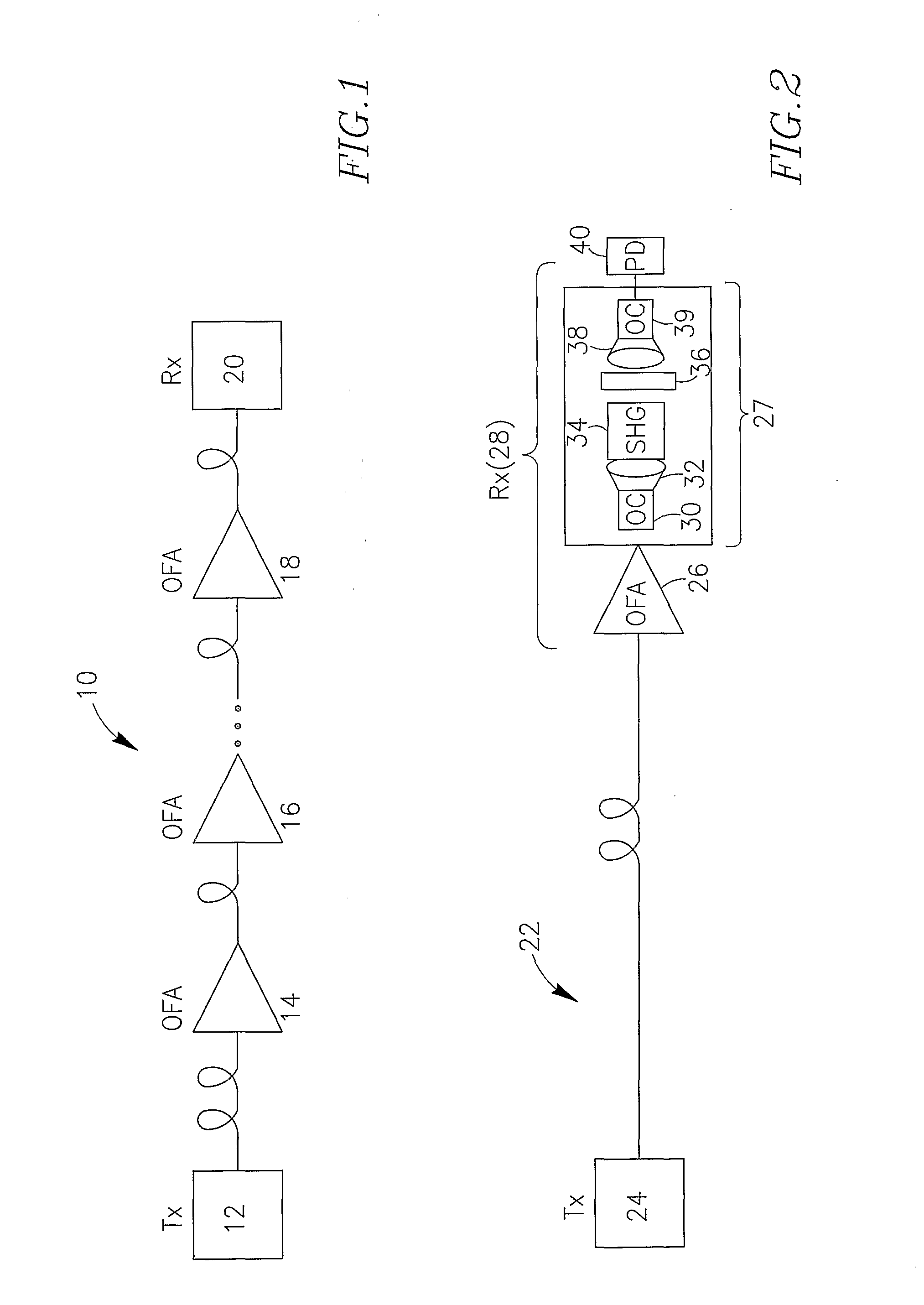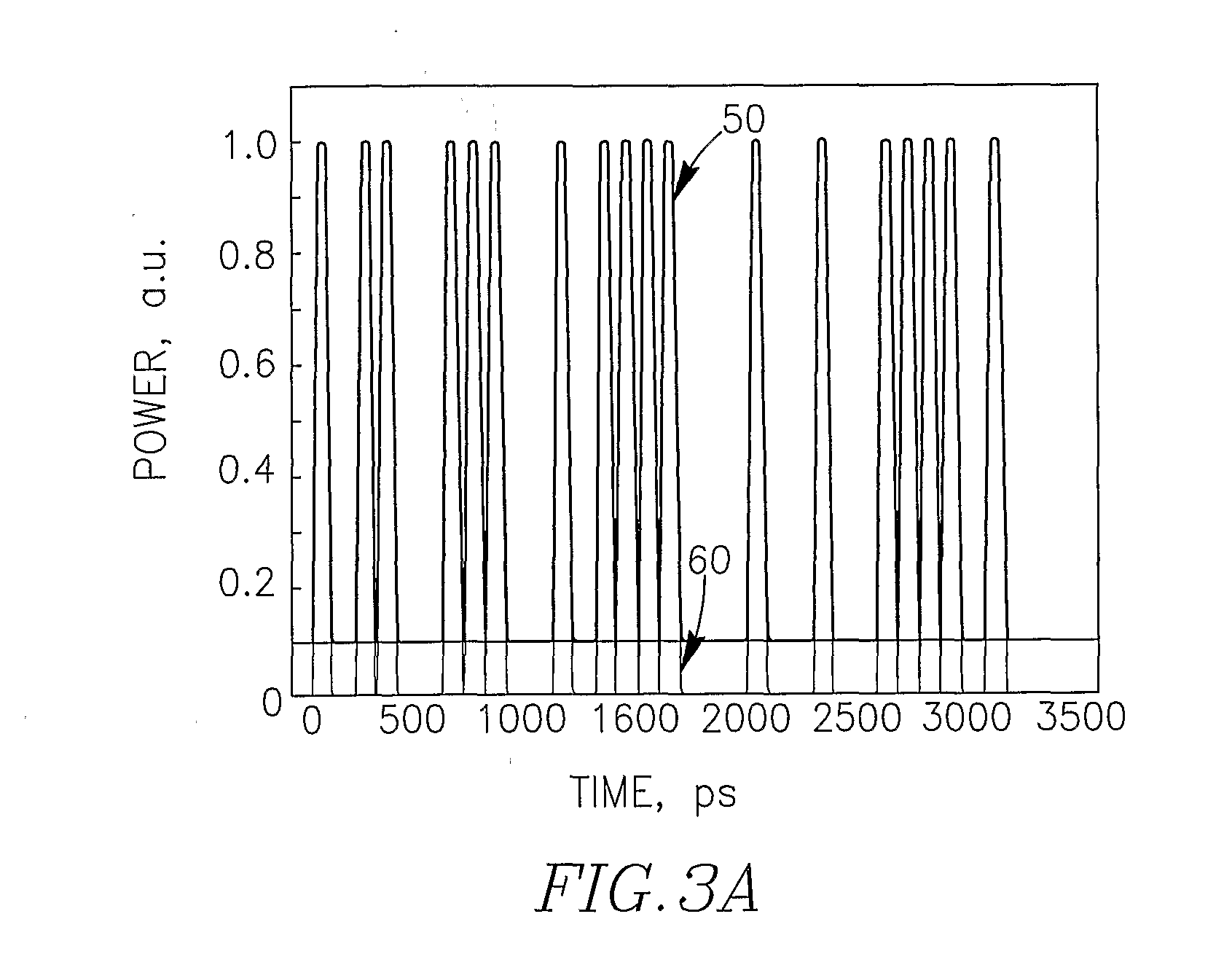Technique for detection of optical data signals
a technology for optical data and detection techniques, applied in optics, instruments, electromagnetic transmission, etc., can solve the problems that the optical communication line (an optical fiber, a free space line) containing optical amplifiers will inevitably accumulate ase nois
- Summary
- Abstract
- Description
- Claims
- Application Information
AI Technical Summary
Benefits of technology
Problems solved by technology
Method used
Image
Examples
Embodiment Construction
FIG. 1 (prior art) schematically shows an optical communication line 10 equipped with conventional means 14, 16, 18 for amplifying the optical data signal carried via one exemplary optical channel between a transmitter 12 and a receiver 20. The conventional means should be understood as Optical Fiber Amplifiers OFA which, while amplifying the optical signal, amplify also the accumulated noise signal and thus lead to degradation of OSNR (Optical Signal to Noise Ratio) being the main characteristic of optical signals' transmission. In this particular figure one exemplary optical channel is illustrated.
FIG. 2 shows an optical line 22 arranged according to the proposed invention. The line 22, for the purpose of example only, comprises an optical transmitter 24 for transmitting data via one optical channel, and does not require at all (or require much less) OFAs and / or optical signal regenerators (not shown) than the conventional line 10, since the line is provided with a novel data dete...
PUM
 Login to View More
Login to View More Abstract
Description
Claims
Application Information
 Login to View More
Login to View More - R&D
- Intellectual Property
- Life Sciences
- Materials
- Tech Scout
- Unparalleled Data Quality
- Higher Quality Content
- 60% Fewer Hallucinations
Browse by: Latest US Patents, China's latest patents, Technical Efficacy Thesaurus, Application Domain, Technology Topic, Popular Technical Reports.
© 2025 PatSnap. All rights reserved.Legal|Privacy policy|Modern Slavery Act Transparency Statement|Sitemap|About US| Contact US: help@patsnap.com



